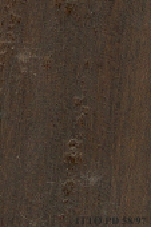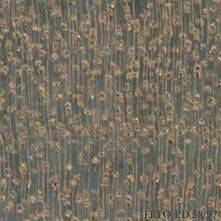
PRECIOSA (Aniba canelilla)
Trade Name
Preciosa
Scientific Name
Aniba canelilla (Kunth) Mez
Family
LAURACEAE
Common Names
Preciosa (Brazil)
Scientific Name Synonyms
Cryptocarya canelilla Kunth; Aniba elliptica A.C. Sm.
Description Of The Tree
Botanical Description
It is a medium size tree, up to 35 m tall. The commercial length is reported to be 11 m in the average, with an average diameter at breast height of 60 cm. The trunk is straight, with low buttresses.
Natural Habitat
Aniba canelilla is reported in the terra firme forests of the Amazon basin.
Natural Distribution
In Brazil it is reported in the Amazonas, Para and Acre states.
Wood Identification
Anatomic Description Of Wood
Wood diffuse porous. Occasionally vessels exclusively solitary (over 90%). Tangential diameter of vessel lumina 100 to 150 micras (small). Tyloses common. Vessels per mm2 10 to 20 (abundant). Simple perforation plates. Vessel-ray pits coarse throughout the ray Paratracheal axial parenchyma scanty and/or vasicentric. Paratracheal axial parenchyma thin vasicentric. 5 to 8 cells per parenchyma strand. 4 to 10 rays per mm (medium). Rays 1 to 4 seriate. Prismatic crystals in the ray cells. Homogeneous rays and/or sub-homogeneous rays (all ray cells procumbent). Oil and/or mucilage cells at marginal cells of ray parenchyma. Oil and/or mucilage cells associated Septate fibers present. Fibers with simple to minutely bordered pits.
-
 Wood Macro Photo Tangential Plane
Wood Macro Photo Tangential Plane
-
 Wood Micro Photo Of Transversal Section
Wood Micro Photo Of Transversal Section
Availability
Cites Status
Unrestricted
General Wood Description
Odor
It has a pleasant smell.
Color
The heartwood and sapwood are distinct. The heartwood is dark yellowish-brown and the sapwood is brownish-yellow color.
COLOR INDEX (1=Black, 7=Light yellow,white)
1
Grain
Irregular grain is reported in this species.
Texture
Medium texture is reported in this species.
Luster
The wood is described as moderate in luster.
Natural durability index (1= Very high durability, 7=Vey low durability)
4
Resistance To Impregnation
The heartwood is reported to be untreatable.
Wood Physical Properties
Basic Density or Specific Gravity (O.D. weight/vol. green) (g/cm³)
1.03
Air-dry Density (Weight and volume at 12%MC) (g/cm³)
1.22
Total shrinkage Tangential (Saturated to 0%MC) (%)
8.2
Total shrinkage Radial (Saturated to 0%MC) (%)
6.4
Drying Defects
Ease of Drying: It is moderately difficult to season and kiln dry. Drying Defects: Warping and slight checking are reported. Kiln Schedules: Careful stacking and mild kiln drying are recommended for this species.
Recommended Dry Kiln Schedule
BR-A
Dimensional stability ratio (Total Tangential Shrinkage %/Total Radial Shrinkage %)
1.3
Wood Chemical Properties
Wood Mechanical Properties
Bending Strength (MOR),12%MC (kgf/cm²)
1875
Stiffness (MOE) 12%MC (kgf/cm²)
179000
Compression parallel to fiber 12%MC (kgf/cm²)
997
Compression perpendicular to fiber 12%MC (kgf/cm²)
206
Shear strength radial 12%MC (kgf/cm²)
188
Janka hardness (side) 12%MC (kgf)
1528
Janka hardness (end grain) 12%MC (kgf)
1500
Workability
Sawing
Sawing of this species is difficult.
Planing
The planing operations are reported to be fair, but the surface quality is bad.
Turning
30
Boring
Boring operations are reported to be fair, with a good finishing.
Sanding
Sanding operations are reported to be fair as well as the finishing.
Finishing
Finishing of this species is reportedly easy.
REFERENCED USES
End Uses Summary
EXTERIOR GENERAL, HOUSING GENERAL, TURNING
Exterior General
- 1 - Tabela de resultados de ensaios fisicos e mecanicos
General Housing
- 10 - Silica in Timbers
Turning
- 30 - Embassy of Honduras in Japan
Please Provide Information To View Producer Information